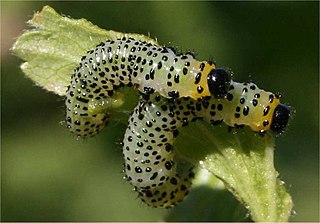
Nematus ribesii is a species of sawfly in the family Tenthredinidae. English names include common gooseberry sawfly and imported currantworm. This insect is best known as a pest of gooseberries. The larvae feed on the foliage of the plant, often defoliating it completely.

Nematinae is a subfamily of sawflies belonging to the family Tenthredinidae. It contains over 1250 described species in ~40 genera. Members of this subfamily feed on a wide range of plants and employ a wide range of feeding habits, both internally and externally, on their host plants.

Nematus leucotrochus is a species of sawfly in the family Tenthredinidae, known as the pale-spotted gooseberry sawfly. Widespread throughout central and northern Europe, this insect is best known as a pest of gooseberries. The larvae feed on the foliage of the plant, defoliating it. Unlike Nematus ribesii, the common gooseberry sawfly, the species has a single brood. Adults appear in early May and larvae in May and June.

Nematus oligospilus, commonly known as the willow sawfly, is a species of sawfly in the family Tenthredinidae. Native to central and northern Europe and Asia, it was first recorded in South America in the 1980s and New Zealand in 1997, and has also been introduced to Australia, South Africa and Lesotho. Its larvae feed on the leaves of various species of willow.

Endelomyia aethiops, the roseslug, is a species of common sawfly in the family Tenthredinidae.

Endelomyia is a genus of common sawflies in the family Tenthredinidae. There are at least two described species in Endelomyia.

Eriocampa ovata, known generally as the alder sawfly or woolly alder sawfly, is a species of common sawfly in the family Tenthredinidae. The larvae feed on the leaves of the common alder and the grey alder, sometimes causing defoliation.

Eriocampa is a genus of common sawflies in the family Tenthredinidae. There are about ten described species in Eriocampa.
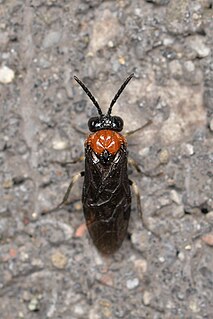
Eutomostethus ephippium is a species of common sawfly in the family Tenthredinidae.
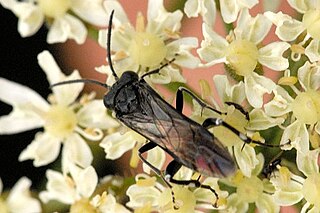
Monophadnoides rubi, the raspberry sawfly, is a species of common sawfly in the family Tenthredinidae.

Monophadnoides is a genus of common sawflies in the family Tenthredinidae. There are about eight described species in Monophadnoides.

Monsoma pulveratum, the green alder sawfly, is a species of common sawfly in the family Tenthredinidae. It is a European species that has been accidentally introduced in North America.

Monsoma is a genus of common sawflies in the family Tenthredinidae. There are at least two described species in Monsoma.

Hercus is a genus of ichneumonid wasp in the subfamily Tryphoninae. There are about seven described species in Hercus.

Nematini is a tribe of common sawflies in the family Tenthredinidae. There are about 14 genera and at least 30 described species in Nematini.

Neoptilia is a genus of argid sawflies in the family Argidae. There are at least two described species in Neoptilia.
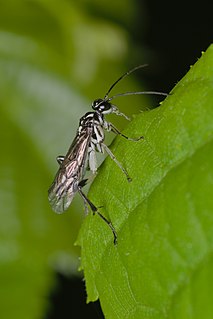
Pachyprotasis rapae is a species of common sawfly in the family Tenthredinidae.
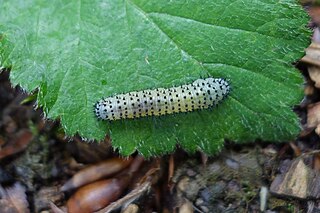
Periclista is a genus of common sawflies in the family Tenthredinidae. There are at least 20 described species in Periclista.
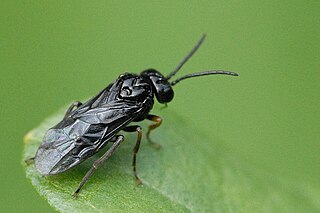
Stethomostus fuliginosus is a species of common sawfly in the family Tenthredinidae.

Stethomostus is a genus of common sawflies in the family Tenthredinidae. There are at least two described species in Stethomostus.

















